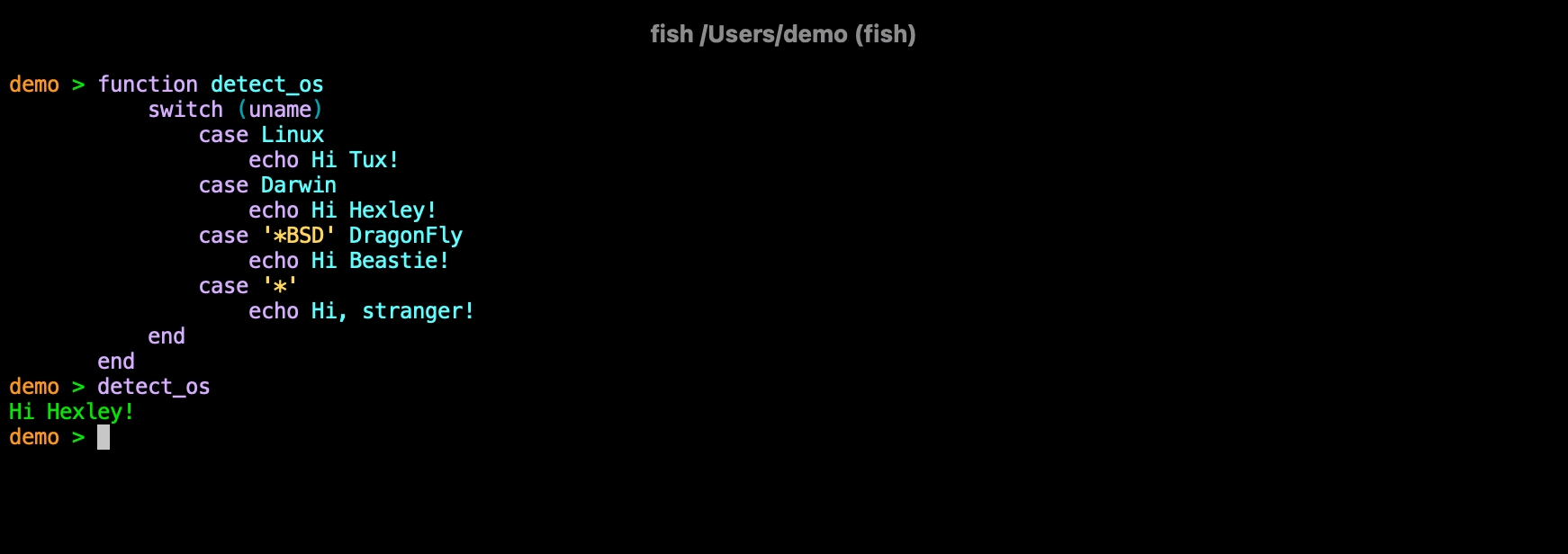Fish (NicMagnier) Mac OS
- Fish (nicmagnier) Mac Os Update
- Fish (nicmagnier) Mac Os X
- Fish (nicmagnier) Mac Os Catalina
- Fish (nicmagnier) Mac Os Download
Instructions on how to install Fish shell on Mac OS X, including Oh My Fish! Also includes several useful functions. fishshell.md. Get more done with the new Google Chrome. A more simple, secure, and faster web browser than ever, with Google’s smarts built-in.
Install Fish Shell on Mac OS X and Ubuntu
Source: http://hackercodex.com/guide/install-fish-shell-mac-ubuntu/ Ladylucks mobile casino.
The Fish shell goes where few command-line shells have gone before, shedding its forebearers’ POSIX baggage in favor of simplicity, consistency, and ease-of-use. Much like the Mac creators thought computers should be made to understand how humans work (and not the other way around), Fish observes your past behavior and suggests commands that it thinks you might be trying to execute. Sometimes, those suggestions are so spot-on that it can be downright spooky. Reactions of “How did Fish know that’s what I wanted to do?” are not uncommon.
In this article, we’re going to show how to install the recently-released Fish 2.1.0 on Mac OS X and Ubuntu, followed by some basic setup steps. Subsequent posts will cover more advanced configuration.
So can a command-line shell be Mac-like? Let’s find out.
What is Fish and why would someone use it instead of another shell?
Fish has a number of advantages over other shells:
- Fish suggests commands as you type based on history and completions, just like a web browser’s search bar
- Fish generates completions automatically by parsing your installed man pages
- Fish has a more intuitive syntax
- Fish has less historical baggage and technical debt
For additional background information, read:
- Fish: the friendly interactive shell — as described in 2005 by the original author
Installing Fish on Mac OS X 10.9 – Mavericks
There are several ways to install Fish on Mac OS X:
- traditional .pkg installer
- standalone Mac application
- Homebrew
- manual compilation
The first two options are available from the Fish web site and are straightforward enough to be considered self-explanatory.
That said, if you already use Homebrew (which I recommend) and have configured your environment as noted in the Mavericks Setup Guide, then you can install Fish as you would any other package:
Add Fish to /etc/shells, which will require an administrative password:
Make Fish your default shell:
Now that Fish is installed, you can proceed to the Basic Configuration section below.
Install latest Fish on Mac OS X from source
If you want to use the latest bleeding-edge version of Fish and already have Xcode installed, use the following steps to install from source:
Add Fish to /etc/shells, which will require an administrative password:
Make Fish your default shell:
Now that Fish is installed, you can proceed to the Basic Configuration section below.
Installing Fish on Ubuntu
On Ubuntu, the easiest way to keep up-to-date is via the offical PPA. If you prefer to install via .deb package, or if you want to install the bleeding-edge version of Fish from source, those instructions are further below.
Install Fish via PPA
The following steps will add the Fish 2.x PPA repository and install Fish:
Make Fish your default shell:
Now that Fish is installed, you can proceed to the Basic Configuration section below.
Install Fish on Ubuntu via .deb
The following steps are for the 64-bit version of Ubuntu 12.04 LTS. If you are using a different version of Ubuntu, you’ll need to retrieve an appropriate .deb package from the Fish on Linux page.
Black horse casino. First retrieve and then install the .deb package:
Make Fish your default shell:
Now that Fish is installed, you can proceed to the Basic Configuration section below.
Install bleeding-edge Fish via PPA
If you prefer, you can keep up-to-date with the bleeding-edge version of Fish via the nightly build PPA. To do so, add the nightly PPA and install Fish:
Make Fish your default shell:
Now that Fish is installed, you can proceed to the Basic Configuration section below.
Install Fish on Ubuntu from source
Install dependencies:
Retrieve source, compile, and install:
Add Fish to /etc/shells:
Make Fish your default shell:
Now that Fish is installed, you can proceed to the Basic Configuration section below.
Basic configuration

Fish (nicmagnier) Mac Os Update
The Fish shell should now be installed, but a bit more configuration will prove helpful later.
Create the Fish config directory:
Create initial config file:
Initial config file contents, which adds /usr/local/bin to the PATH environment variable:
Open a new terminal session, which should now load the Fish shell by default for the first time. You can enter help, followed by the return key, to load user documentation in your default browser.
You can also see your current configuration in your default browser by first entering this command:
… and then visiting http://localhost:8000/ in your browser of choice.
Fish can parse your installed man pages and automatically generate completion files for your command-line tools. You should periodically run the following command to update those completions, which are stored in ~/.config/fish/completions by default:
Last but not least, running:
… will eliminate the Fish welcome message that appears by default. If you want to add your own custom welcome message instead of removing the message entirely, insert your preferred text inside the ' marks.
Getting back to Bash
If you want to temporarily switch to the Bash shell for a single session, run:

Fish (nicmagnier) Mac Os X
When you are done with your Bash session, type exit to return to your Fish shell.
Fish (nicmagnier) Mac Os Catalina
If you decide Fish isn’t for you and want to permanently revert your default shell back to Bash:
… will switch your default shell to Bash.
More coming soon
Fish (nicmagnier) Mac Os Download
With Fish as your default shell, you may find that customizations you’ve made to your Bash environment are not present in Fish. The good news is that it’s easy to re-create those customizations — and create new enhancements — via Fish aliases and functions. The next article in this series will demonstrate some more advanced Fish capabilities, so stay tuned for more!